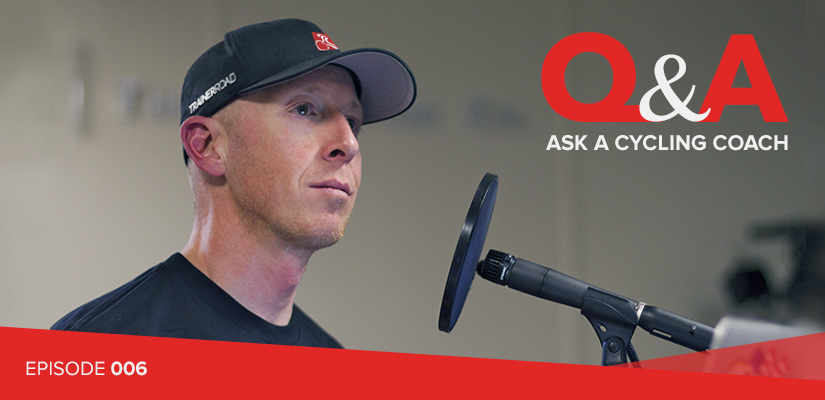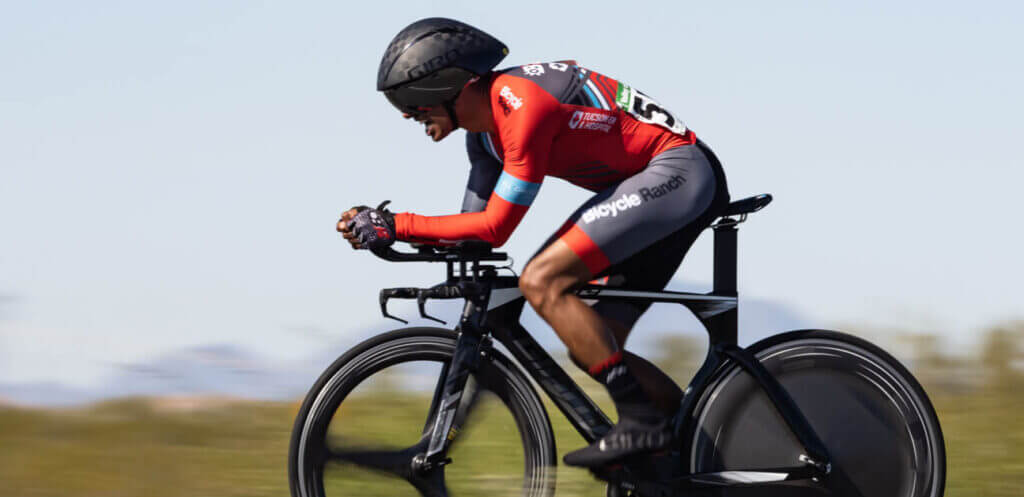Ask a Cycling Coach 006 – TrainerRoad Podcast

TrainerRoad’s Ask a Cycling Coach podcast gives you the chance to get answers to your cycling and triathlon training questions with USAC certified coaches Chad Timmerman, Jonathan Lee and special guests. Check out a few questions we answered in our latest episode with special guest and TrainerRoad Director of Customer Support, Alex Kizis.
Listen to the Full Episode
How to use resting heart rate to measure recovery?
Using RHR (resting heart rate) to assess recovery is a common endeavor by athletes and one that can prove very helpful in understanding your body’s response to training. After familiarizing yourself with your resting heart rate, you may be able to notice signs of fatigue through data before perceiving the fatigue in your body. Like all other measuring practices that involve heart rate, the data has to be considered with a grain of salt, but with time and effort you can derive valuable information from it.
The best time to measure your resting heart rate is upon waking. The reason for this is due to the fact that you have had minimal opportunity to introduce variables into your heart rate readings (ingestion, activity, etc.), and that your heart rate should be in a truly rested state.
When it comes to measuring your resting heart rate, there are a number of ways you can go about it. If you have a 24 hour heart rate measuring device like a FitBit, your resting heart rate may be recorded on your smartphone. If you have a chest strap heart rate monitor, you can put this on and pair a device to see the heart rate data, or you can use the tried and true stopwatch and fingers on the neck method.
Regardless of the method, the goal is to measure your heart rate under similar circumstances every morning, and watch for trends. Before drawing any conclusions, it’s a good idea to gather data for two or three weeks to understand how your resting heart rate is affected by certain activities. In most cases, a fluctuation of a few beats per minute shouldn’t sound any alarm bells, but if you see a fluctuation of five beats or more, it merits your consideration of the activities endured over the previous few days.
After an abnormally hard day of training, you should anticipate an increase in your resting heart rate. Upon noticing a substantial increase, you would want to analyze your upcoming training sessions and see where you can reduce the intensity or duration. If the fatigue is severe, it may be best to take the day off of training and pick things up the following day.
To hear the coaches’ advice on this topic, listen at 10:37.
Is Base Training still needed if I’m an experienced cyclist?
Base fitness is very unique to the type of fitness that you gain as you near your peak. Base training specifically builds effective muscle conditioning and aerobic fitness that will allow you to enter a build phase with a wide and stable base of fitness.
Conversely, entering into a build or specialty phase without paying due attention to specific base training will only allow you a fragile peak of fitness, or better said, one that you should not expect to last as long.
Even high-level professional cyclists spend time rebuilding their base fitness every year. While there are different approaches to take with your base training, the goal is to build, or rebuild that solid foundation that allows you a long-lasting peak of fitness that fulfills your potential.
To hear the coaches’ advice on this topic, listen at 15:24.
Should I be in my aero position during FTP tests?
A common dilemma for cyclists is whether or not you should assess your FTP in your aero position. In most cases, athletes find it difficult to put out the same amount of power in their aero position as they do in their upright position. Consequently, if you assess your FTP in your aero position, your workouts are usually too easy when riding in an upright position, but if you assess in your upright position, your workouts are too hard in your aero position.
When assessing your FTP, you should do so in whatever position allows you to find your true FTP. Having an accurate indication of your Functional Threshold Power is a prerequisite to effective power-based training.
Some workouts should be seen as position-independent, while others should be seen as position-related.
Position-independent workouts intend to create a physiological response. Whether that intention is to maximize your power output at VO2 Max or increase your muscle endurance, these workouts are demanding and should require you to be highly-focused on your power output and goals.
Position-related workouts require you to match your power output goals while in the position that you will use during your goal event.
As you progress through your annual training plan, you will spend increasingly more time in your aero position, allowing you to build your ability to maintain high levels of power in that position.
To hear the coaches’ advice on this topic, listen at 26:34.
Additional Notes
We answered a lot of questions in this week’s Ask a Cycling Coach podcast. You can learn more about these topics with our resources below:
- How to train in the offseason for triathletes
- Post-season Ironman Training
- How to adjust your training when sick
- How to structure a road racing training plan
- How to train for a long season of racing
- How to fit group rides into your training plan
- How to use FTP to create heart rate training zones
- How to incorporate commuting into a training plan
- What is the best training plan to use in order to lose weight
- How to train for 10 km – 15 km time trials
If you have a question that you’d like to ask Coach Chad, submit your question here. We’ll do our best to answer them on the next episode of the Ask a Cycling Coach podcast.
